How to Ditch the Iron: Real-World Tricks for Wrinkle-Free Clothes
For what feels like a lifetime, I’ve been the person in charge of wardrobes for touring theater groups. My world has been a chaotic, wonderful blur of quick changes, backstage repairs, and making sure actors look flawless under hot stage lights. And let me tell you, luggage gets thrown around, hotel irons are a gamble, and sometimes, you just don’t have an iron backstage. I’ve had to get a leading man’s linen suit ready for the stage in a cramped dressing room with ten minutes on the clock. In those moments, you don’t panic—you get resourceful. You learn what actually works.
In this article
- First, Why Do Clothes Get Wrinkled Anyway?
- The Pro’s Real Secret Weapon: The Handheld Steamer
- The Classic Steaming Methods (When You Don’t Have a Steamer)
- When You Need a Little Pressure: Contact Heat
- Preventing Wrinkles in the First Place
- When You Need a Little Chemical Help
- Okay, So Which Method Should I Actually Use?
- My Go-To Wrinkle-Fighting Travel Kit
- Inspirational Gallery with Photos
But let’s be real. None of these tricks are going to give you the razor-sharp, perfect crispness of a high-quality steam iron and a proper board. That’s a specific kind of magic. Think of these as your get-out-of-jail-free cards for when you’re traveling, your iron dies, or you’re just in a hurry. These are the solutions that save the day in the real world. We’re not technically “ironing” here; we’re just relaxing fabric fibers so we can coax them back into shape.
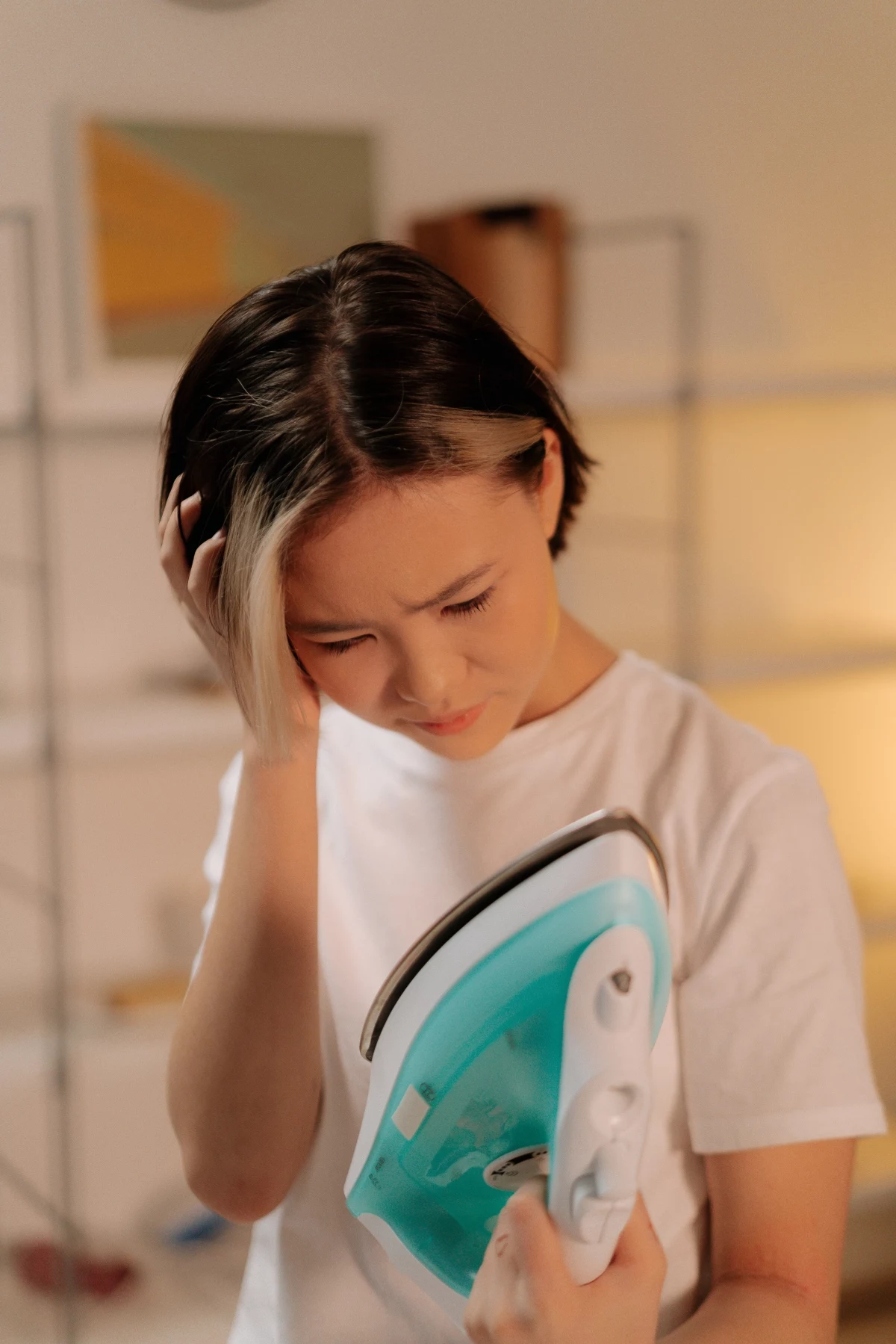
First, Why Do Clothes Get Wrinkled Anyway?
It helps to know what you’re up against. Wrinkles aren’t just random; they happen on a molecular level. In natural fabrics like cotton or linen, the fibers are made of long chains, kind of like cooked spaghetti. When the fabric is pressed flat at the factory, the bonds between these chains hold them in a neat, smooth order.
But when you wear the clothes, the combination of your body heat, moisture in the air, and just moving around breaks those bonds. The fibers get all jumbled up. When the fabric cools down, the bonds lock into that new, crumpled position, and… voilà, wrinkles. It’s all about using a bit of moisture or heat to soften those bonds again so we can smooth things out. Simple science, right?
The Pro’s Real Secret Weapon: The Handheld Steamer
Okay, let’s talk about the elephant in the room. If you travel often or just hate ironing, the single best tool you can own is a handheld travel steamer. Honestly, this is the real secret weapon pros rely on. It’s faster and more efficient than any other trick on this list.
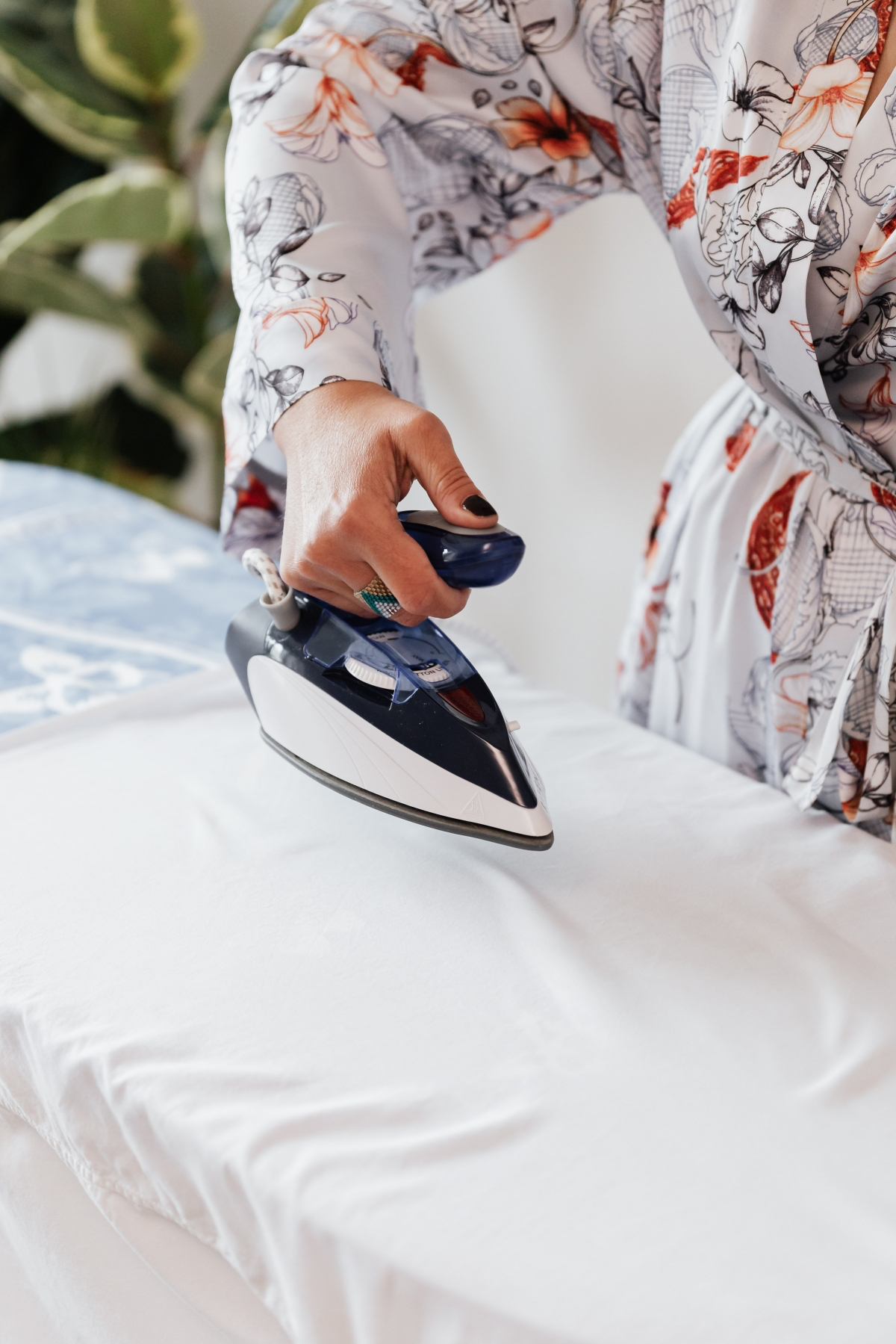
Why is it so much better? It shoots a powerful, targeted jet of steam right where you need it, relaxing fibers in seconds without getting the whole garment soaking wet. It’s a game-changer for everything from silk blouses to suit jackets. A decent one will run you between $30 and $50 on Amazon or at a store like Target, and it’s an investment that pays for itself in time and frustration. If you have the luggage space, pack it. You won’t regret it.
The Classic Steaming Methods (When You Don’t Have a Steamer)
If a dedicated steamer isn’t an option, you can still create the same effect. Steam is your best friend because it delivers heat and moisture gently.
The Shower Method (But Done the Right Way)
This is the trick everyone knows, but most people mess it up and end up with a damp, still-wrinkled shirt. The goal is to create a sauna, not to give your clothes a second shower.
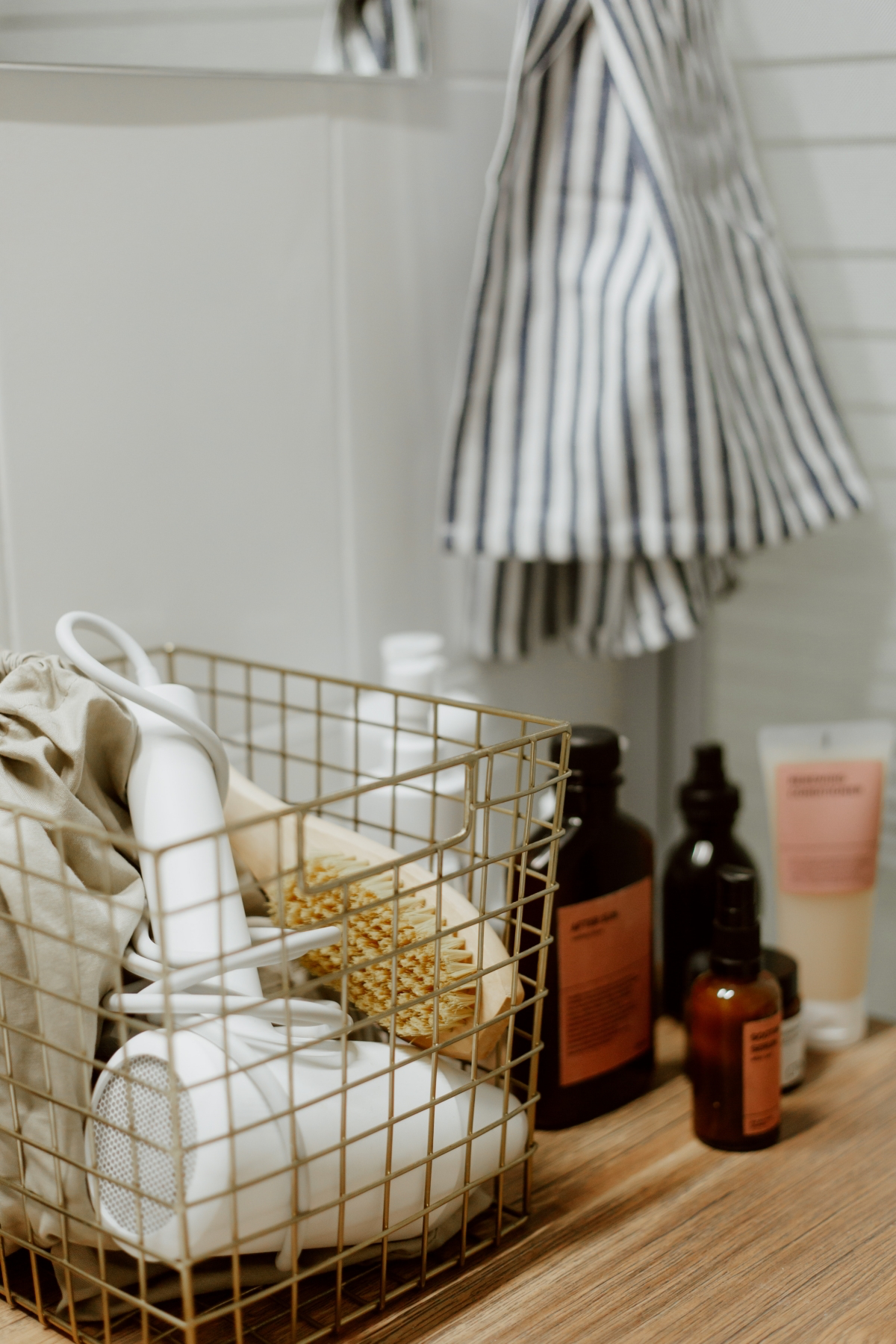
Here’s how to do it properly:
- Use a good hanger. Seriously, no thin wire hangers. They’ll just create new puckers in the shoulders. A thick plastic or wooden hanger that supports the garment’s shape is a must.
- Seal the room. Close the bathroom door and any windows. If there’s an exhaust fan, turn it off. You want to trap every bit of steam.
- Hang it smart. Place the garment on the shower rod or the back of the door, but make absolutely sure no water can splash on it.
- Run the shower HOT. Turn the water to its hottest setting and let it run for a solid 15 minutes. The room should get thick and foggy.
- The crucial post-steam step. After 15 minutes, turn off the water but—and this is key—leave the garment in the steamy room for another 5 minutes with the door closed. Then, take it out. While the fabric is still warm and a little damp, use your hands to gently pull and smooth the collar, cuffs, and the placket (the button strip). Gravity does most of the work, but this little bit of manual help sets the shape.
- Let it air dry. Hang it somewhere with good airflow and let it dry completely before you put it on. If you wear it while it’s still damp, you’ll just create new wrinkles.
Good to know: This method is fantastic for wool (think suits) and most cottons. However, it’s often not powerful enough for deep, stubborn creases in heavy linen, and it can be risky for delicate fabrics like velvet that don’t do well with a lot of moisture.
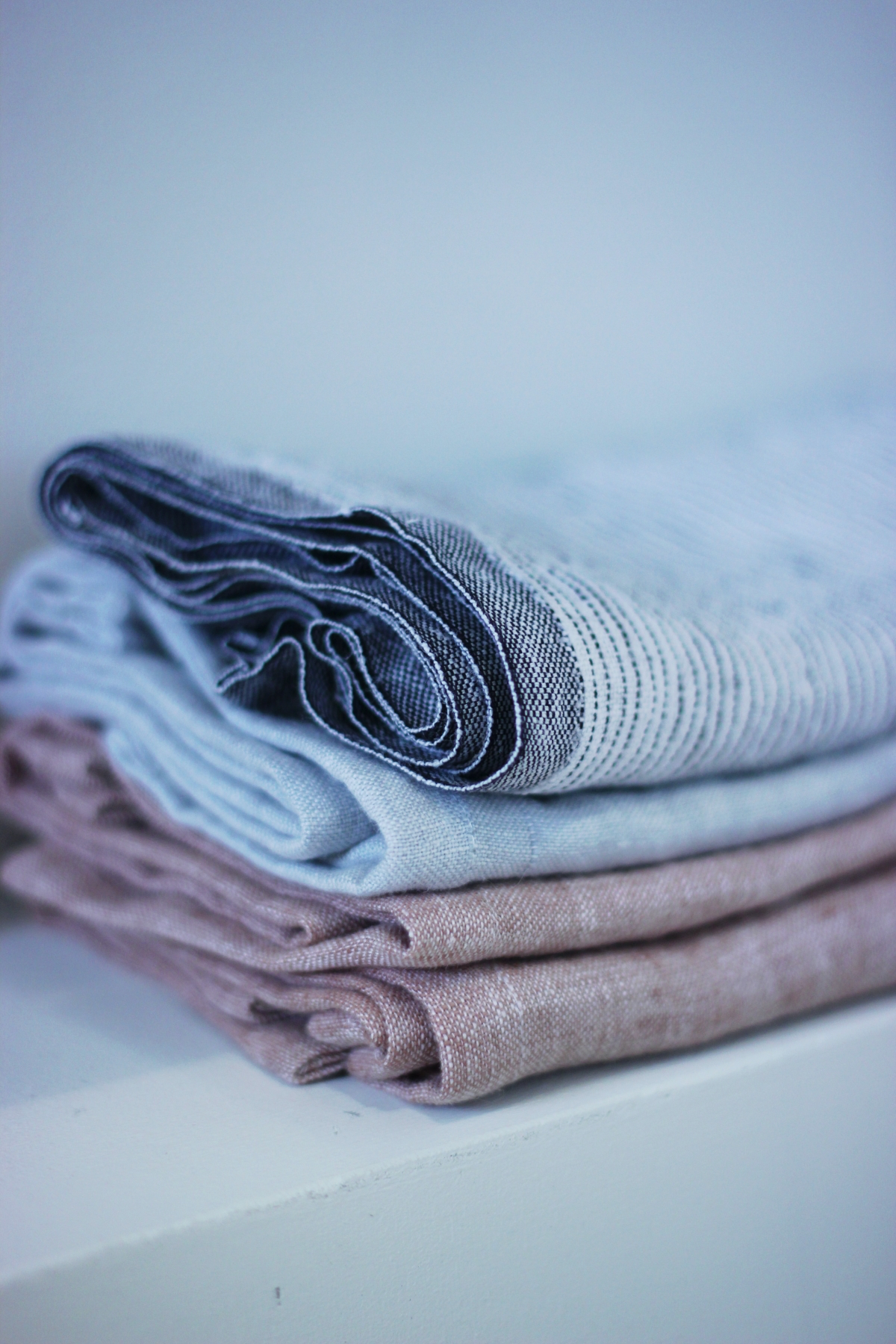
Targeted Steaming with a Kettle
Sometimes you just have one annoying crease on a collar. For a quick spot treatment, a kettle is your friend.
Heads up! A serious safety warning here. Steam from a kettle is incredibly hot and can cause nasty burns. Keep your hands and face far away from the steam path. Hold the garment by the hanger, not near the fabric you’re steaming.
Here’s the technique: Get a kettle to a rolling boil. Holding the garment on its hanger, carefully aim the jet of steam from the spout toward the wrinkled spot. Keep the spout at least 10 inches away from the fabric to avoid water spots or damage. Keep the steam moving and gently tug the fabric taut with your other hand. It’s an old tailor’s trick that works like a charm for small fixes.
When You Need a Little Pressure: Contact Heat
For some wrinkles, steam alone won’t cut it. You need direct heat and pressure. This is where things get risky, so proceed with caution.
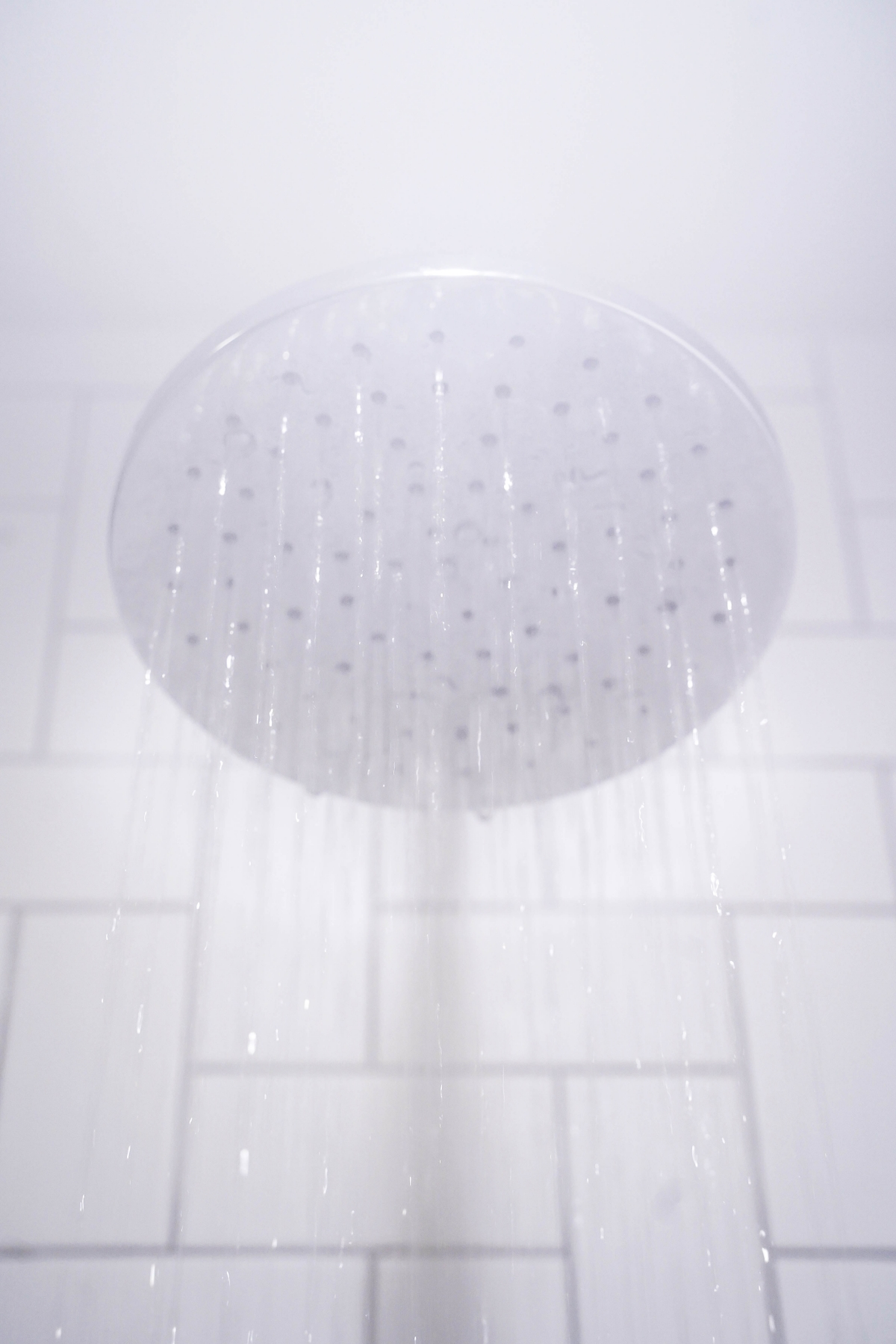
The Hair Straightener (A True Last Resort)
I almost hesitate to mention this because I’ve seen it end in disaster—melted polyester ties, scorch marks on silk… it’s not pretty. But if it’s an emergency, here’s the safety protocol:
- Check the care label. If it says “Do Not Iron,” then don’t do this. It’s safest on cotton. Never, ever use this on synthetics like nylon or acrylic; they will melt in an instant.
- Clean the plates! Any hair product residue will transfer to your clothes and create a stain. Wipe the cool plates with a little rubbing alcohol.
- LOWEST heat. Start with the absolute lowest temperature setting. Look for one that goes under 300°F / 150°C if possible. You can’t undo a burn.
- Test on a hidden spot. Always. An inside seam is perfect.
- Keep it moving. This is the golden rule. Do not clamp down. Glide it over the fabric smoothly and quickly. A moment too long is all it takes to cause damage.
Honestly, this is only good for tiny areas like a collar, a cuff, or the fabric between buttons. It is not for an entire shirt.
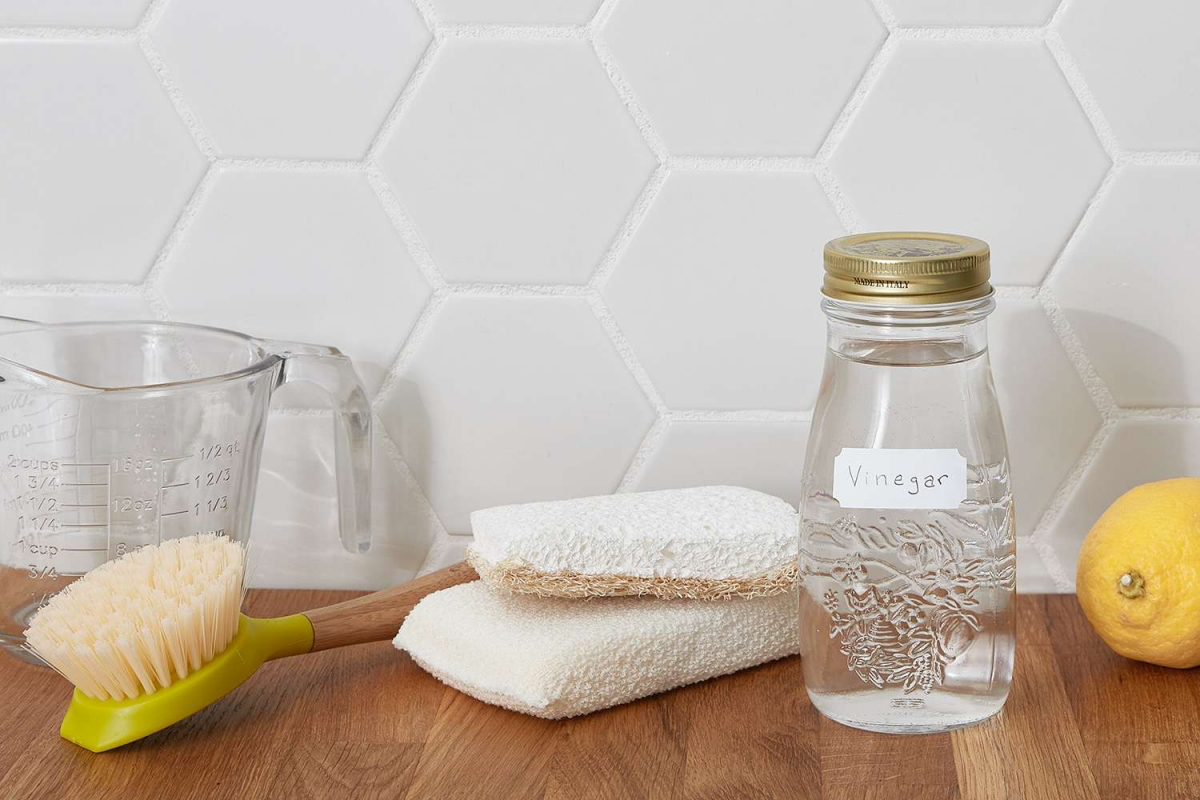
The Hair Dryer & Water Mist Method (Much Safer!)
This is my go-to for quick fixes and is way safer than a flat iron. It’s like a DIY steamer with more control.
Here’s what you do: Hang the garment up. Take a clean spray bottle and fill it with distilled water (a pro tip to avoid mineral deposits from tap water over time, but tap is fine in a pinch). Lightly mist the wrinkled spots until they’re just damp. Set your hair dryer to medium heat and low speed, hold it about 6 inches from the fabric, and as you apply the heat, use your other hand to pull the fabric taut. You’ll literally see the wrinkles vanish as it dries. It’s surprisingly effective!
Go on, try it now. Grab a wrinkled t-shirt from your laundry pile. I bet you can make it look 80% better in under three minutes. I’ll wait.
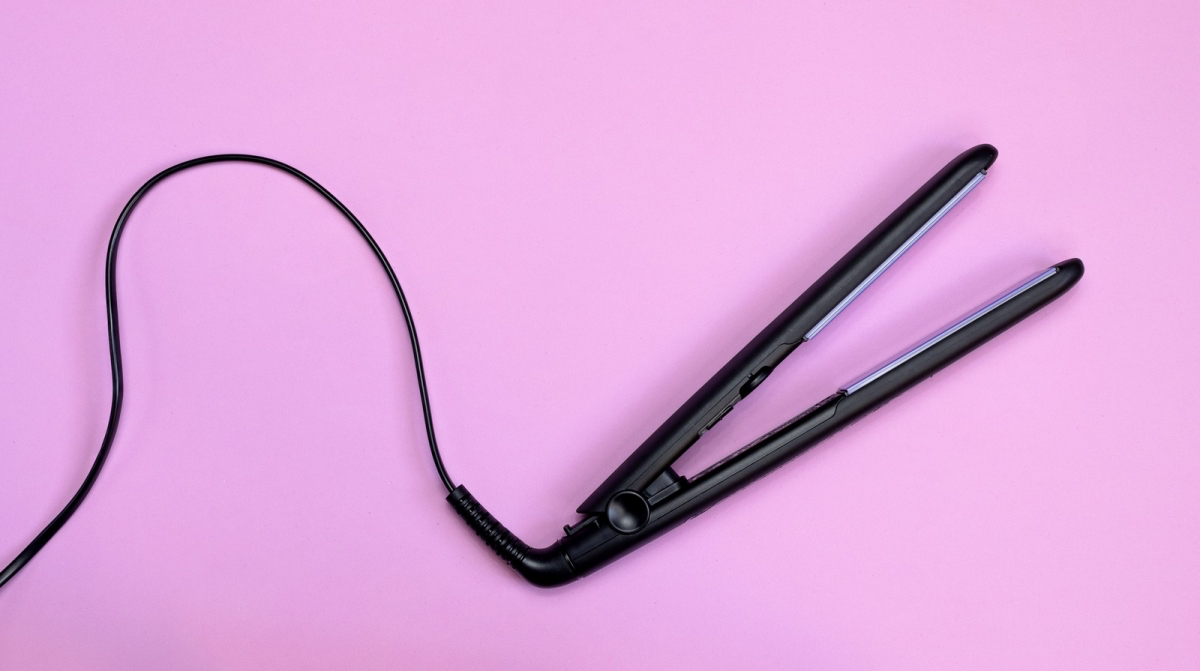
Preventing Wrinkles in the First Place
Sometimes the best offense is a good defense. This is what I teach actors to do when they pack.
Forget folding everything into neat squares—that just creates hard creases. Instead, you should be rolling. Lay the item flat, smooth it out, and then roll it tightly like a sleeping bag. For t-shirts and jeans, this is perfect. However, for a button-down dress shirt, I still recommend a careful fold to protect the structure of the collar. You can also use this rolling technique to remove light wrinkles: just mist the garment lightly, roll it up tightly, and place it under your mattress or a stack of heavy books for an hour. The sustained pressure helps smooth things out.
When You Need a Little Chemical Help
There are products out there designed to do the work for you.
Commercial Wrinkle-Release Sprays
Brands like Downy and Bounce make wrinkle-releaser sprays that work quite well, especially on cottons and knits. A travel-size bottle costs around $8 and is a great addition to your luggage. The pro move is to spray the garment lightly, then use your hands or the hair dryer method to smooth and set the fabric. Always test on a hidden seam first, just in case.
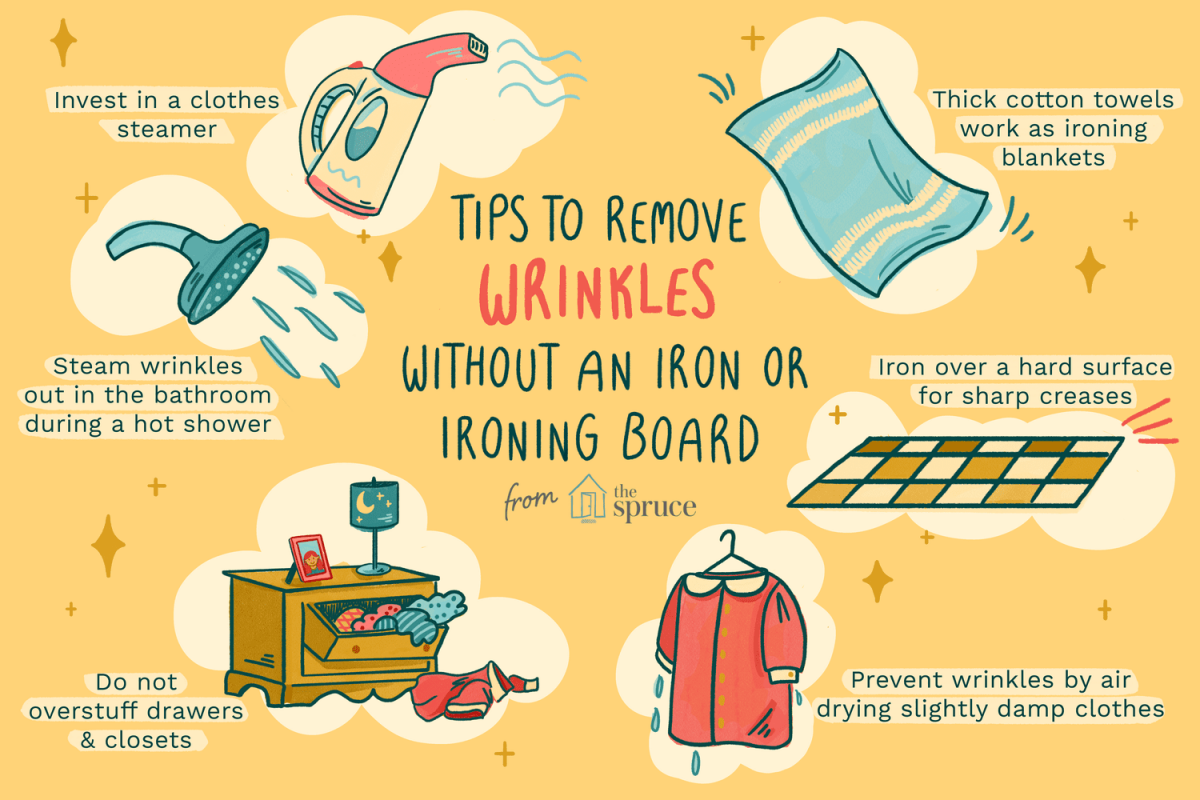
The DIY Wrinkle Releaser (That’s Actually Safe)
You’ll see a lot of blogs recommending a mix of vinegar and water. As someone who handles valuable garments, I’m begging you: please don’t. Vinegar is an acid that can weaken fibers and mess with dyes over time. And yeah, it can leave a faint sour smell.
Instead, here’s a safe and effective DIY recipe:
- Get a small, clean spray bottle.
- Add 1 cup of distilled water.
- Add 1 teaspoon of liquid fabric softener.
- Shake it gently to mix.
That’s it! The fabric softener contains ingredients that relax fibers. Lightly mist your garment, give it a shake, smooth it with your hands, and let it hang to dry. It works wonders and smells much better.
Okay, So Which Method Should I Actually Use?
I get it, it’s a lot. Here’s a quick-and-dirty guide:
- For a wool suit, dress, or knit sweater: The Shower Method is your best bet for an all-over refresh.
- For a stubborn shirt collar or cuff: The Kettle Method or (very carefully!) the Hair Straightener is perfect for a targeted attack.
- For a delicate silk or rayon blouse: The Hair Dryer Method is the safest and most controlled option. Avoid high heat!
- For a wrinkled t-shirt or casual cotton item: The Hair Dryer or DIY Wrinkle Spray will have it looking great in minutes.
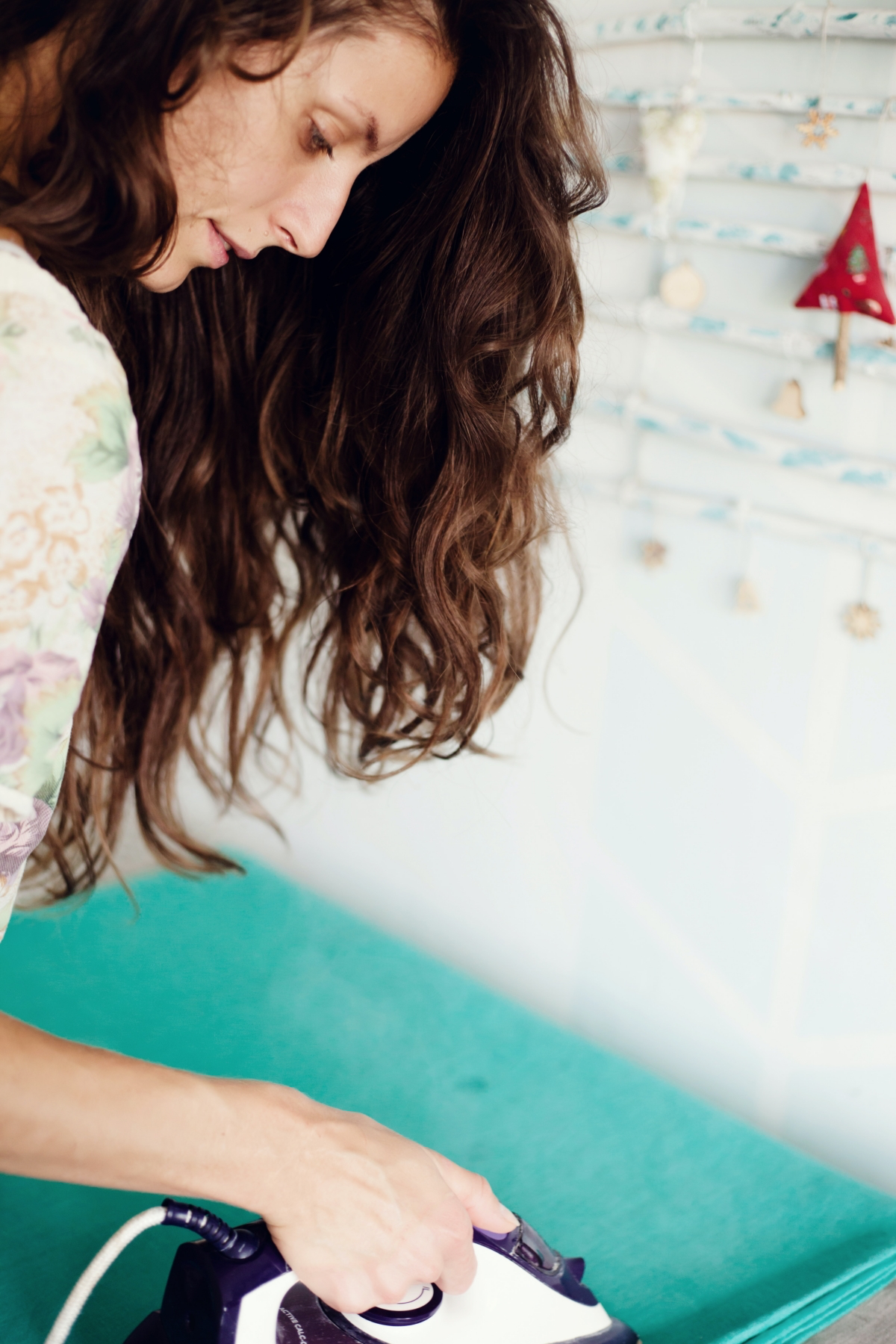
My Go-To Wrinkle-Fighting Travel Kit
Want to be prepared for anything? This is what I’d pack:
- A good, sturdy plastic hanger (never rely on the hotel’s wire ones).
- A small, empty spray bottle for water or your DIY solution.
- A travel-size bottle of a commercial wrinkle releaser like Downy Wrinkle Releaser.
With these few items, and the tricks you’ve just learned, you can handle almost any wrinkle emergency the world throws at you—no iron required.
Inspirational Gallery with Photos
The ultimate preemptive strike: Don’t fold, roll. Tightly rolling items like t-shirts, knits, and even jeans prevents the hard, set-in creases that form when folded clothes are compressed in a suitcase. For blouses or jackets, a folding board can help create soft, rather than sharp, folds.
- Merino Wool: Naturally elastic, temperature-regulating, and antimicrobial.
- Tencel/Lyocell: Drapes beautifully with a silky feel and resists wrinkling.
- Knit fabrics (Jersey/Ponte): The looped structure of these fabrics makes them inherently more flexible than woven materials.
The takeaway? Building a travel-friendly wardrobe starts with the fabric tag.
A study revealed that the average household iron can consume more energy per hour than a microwave oven.
By opting for non-heat methods or using a quick, efficient handheld steamer, you’re not just saving time—you’re reducing your carbon footprint. It’s a small change that contributes to a more sustainable laundry cycle and extends the life of your garments by avoiding harsh, direct heat.
Can you use a hair straightener in an emergency?
Yes, but with extreme caution. It’s a last-resort tool best for small, sturdy cotton areas like a shirt collar or a hem. First, ensure the ceramic plates are perfectly clean of any styling product residue. Use the lowest heat setting and keep the straightener moving constantly to avoid scorching. Never attempt this on delicate fabrics like silk or synthetics.
DIY Wrinkle-Release Spray: A simple mix of 1 cup distilled water, 1 teaspoon of fabric softener, and 1 teaspoon of rubbing alcohol in a spray bottle. It’s incredibly cost-effective but can sometimes leave a slight residue on darks.
Commercial Wrinkle-Release Spray: Products like Downy Wrinkle Releaser or The Laundress Crease Release are professionally formulated for zero residue and often have a more refined scent. Perfect for reliability on the go.
There’s a quiet confidence that comes from knowing you can pull an outfit from your bag and have it ready in minutes. It’s the freedom of looking polished for a business meeting or a nice dinner without the hassle of wrestling with a clunky, unreliable hotel iron. This is less about achieving razor-sharp perfection and more about embracing an effortlessly smooth travel style.
The fashion world has embraced the anti-iron ethos. Look for ‘commuter’ or ‘performance’ wear from brands like Ministry of Supply or Rhone, which use tech-forward fabrics engineered to resist wrinkles. Even mainstream stores now offer dress shirts and chinos in polyester-spandex blends that look sharp right out of the dryer or suitcase.
Many synthetic fibers like polyester are ‘thermoplastic,’ meaning their shape is heat-set during manufacturing. When they get crumpled, they have a ‘memory’ of their original flat state and will naturally try to return to it.
- Arrive with a suit or dress that’s genuinely ready to wear.
- Protect delicate fabrics from snags and crushing.
- Avoid the immediate chore of unpacking and steaming everything.
The secret? A quality, structured garment bag. It’s the one piece of luggage designed to transport clothes, not just stuff them.










